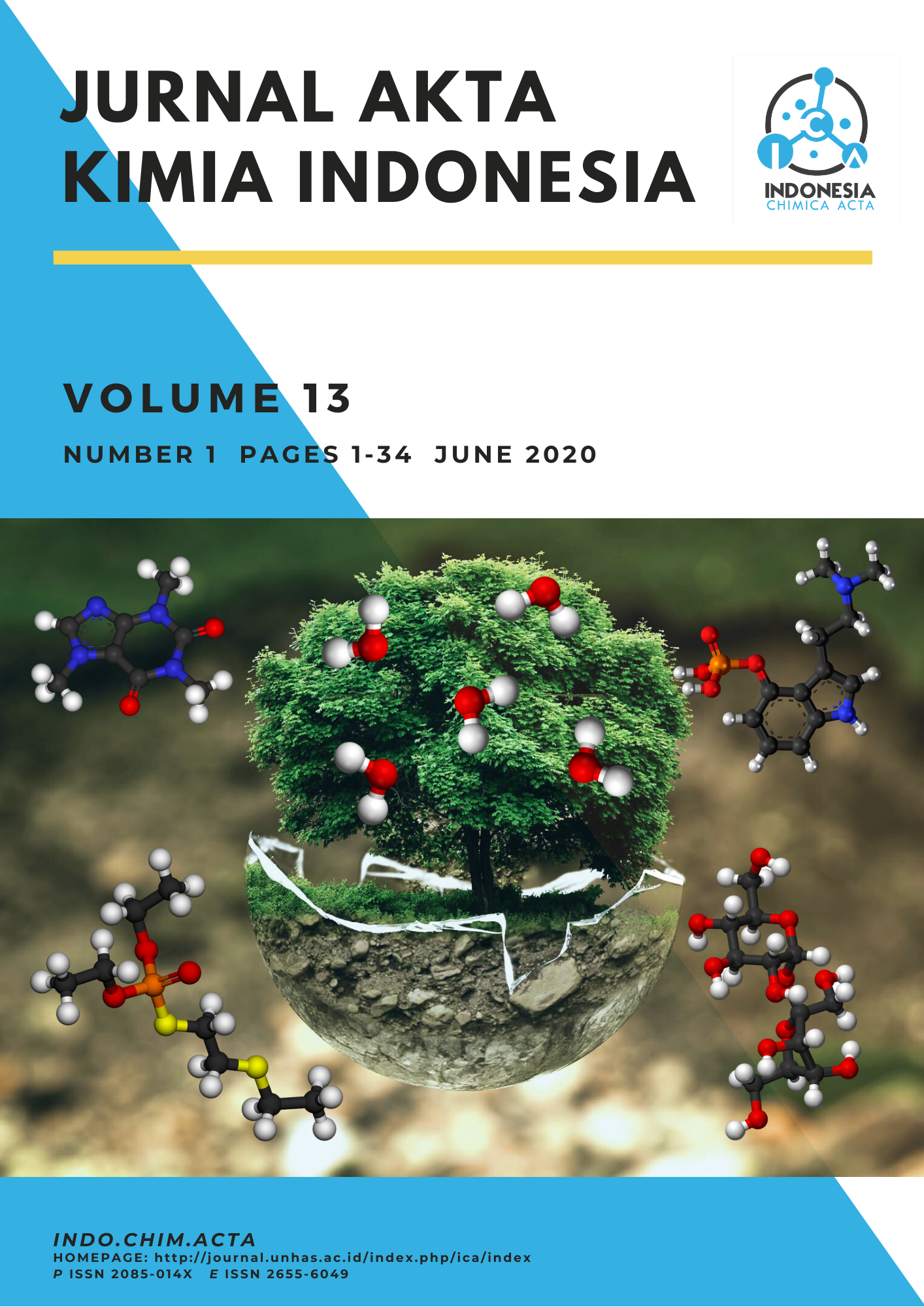Absorption of Heavy Metal Lead (Pb) by Water Hyacinth (Eichhornia crassipes) and Its Influence to Total Dissolved Solids of Groundwater in Phytoremediation
Abstract
Waste of heavy metal lead (Pb) in waters needs to be addressed through phytoremediation because it is toxic to the environment. The purpose of this study is to determine the effect of water hyacinth (Eichhornia crassipes) ability in water to absorb heavy metal Pb and its effects to total dissolved solids (TDS) of groundwater during the phytoremediation process. Using E. crassipes, groundwater samples and Pb(NO3)2 as a source of Pb, the initial characterization of the two samples was previously carried out. Created four treatments of ground water, i.e.: P1 contains 2 ppm Pb with E. crassipes, P2 contains 4 ppm Pb with E. crassipes, P3 contains 2 ppm Pb without E. crassipes, and P4 contains 4 ppm Pb without E. crassipes. Observation of Pb by method of atomic absorption spectrometry (AAS) and determination of TDS by gravimetric method, each carried out on days 0, 4, 8, and 12. The results show the treatment of 2 ppm Pb, E. crassipes is more effective at absorbing Pb which is 96.0% compared to treatment 4 ppm Pb which is 90.0%. While 2 ppm Pb and 4 ppm Pb as control only 18.5% and 17.5%. Treatment of 2 ppm Pb which uses E. crassipes shows better water quality than concentration TDS 62.55 ppm compared to treatment of 4 ppm Pb with TDS 70.50 ppm while 2 ppm Pb and 4 ppm Pb as a control does not significantly affect to water quality.
Authors
This is an open access journal which means that all contents is freely available without charge to the user or his/her institution. Users are allowed to read, download, copy, distribute, print, search, or link to the full texts of the articles in this journal without asking prior permission from the publisher or the author.
Jurnal Akta Kimia Indonesia (Indonesia Chimica Acta) operates a CC BY-SA 4.0 © license for journal papers. Copyright remains with the author, but Jurnal Akta Kimia Indonesia (Indonesia Chimica Acta) is licensed to publish the paper, and the author agrees to make the article available with the CC BY-SA 4.0 license. Reproduction as another journal article in whole or in part would be plagiarism. Jurnal Akta Kimia Indonesia (Indonesia Chimica Acta) reserves all rights except those granted in this copyright notice.



